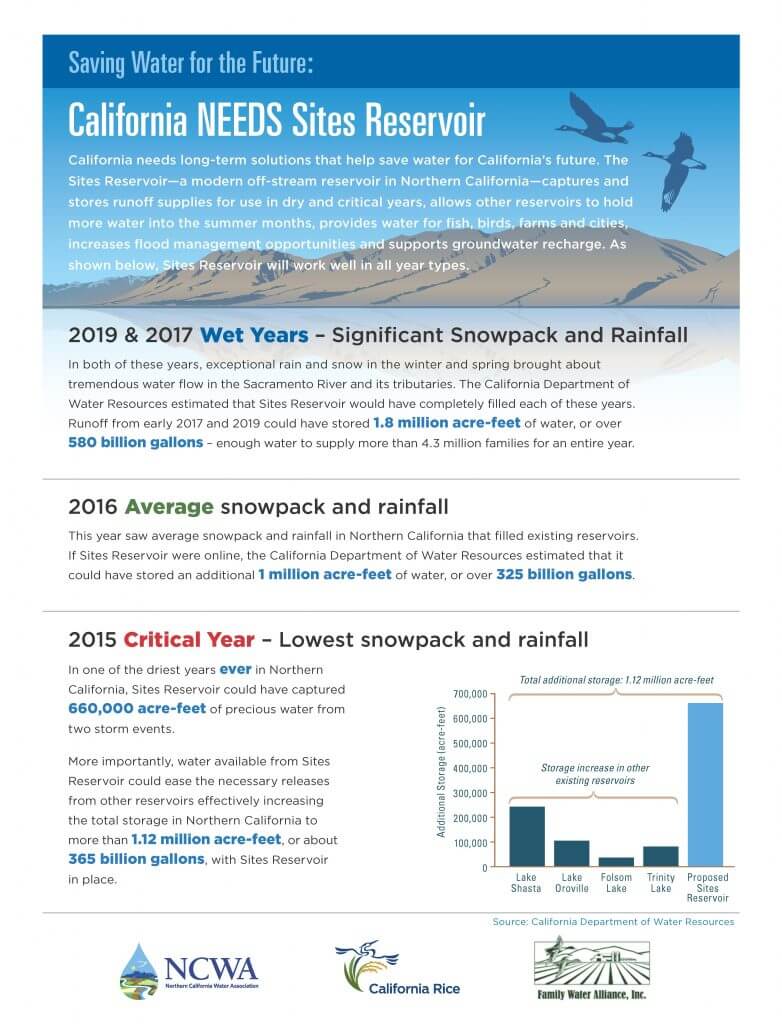As California seeks water resiliency and solutions to prepare for more extreme wet and dry years, Sites Reservoir emerges as an innovative 21st century water project: an off-stream regulating reservoir on the west-side of the Sacramento Valley that can store water for the future by capturing it during high runoff periods, and then releasing it for various beneficial uses at a later time. With its location upstream of the Delta and near the Sacramento River, water in Sites reservoir would serve multiple benefits in the Sacramento Valley, as well as the Delta and the rest of the state.
Importantly, Sites Reservoir would benefit California and thus help provide resiliency in all types of years. The following provides a good illustration using recent years as an example.
- Wet Years. In both 2017 and 2019, exceptional rain and snow in the winter and spring brought about tremendous water flow in the Sacramento River and its tributaries. The California Department of Water Resources estimated that Sites Reservoir would have completely filled each of these years. Runoff from early 2017 and 2019 could have stored 1.8 million acre-feet of water, or over 580 billion gallons – enough water to supply more than 4.3 million families for an entire year.
- Average Years. In 2016, we saw average snowpack and rainfall in Northern California that filled existing reservoirs. If Sites Reservoir were online, the California Department of Water Resources estimated that it could have stored an additional 1 million acre-feet of water, or over 325 billion gallons.
- Dry Years. In 2015, one of the driest years ever in Northern California, Sites Reservoir could have captured 660,000 acre-feet of precious water from two storm events. More importantly, water available from Sites Reservoir would have eased the necessary releases from other reservoirs (i.e., Shasta, Oroville, Folsom), effectively increasing the total storage in Northern California to more than 1.12 million acre-feet, or about 365 billion gallons, with Sites Reservoir in place.
For more details, see the information below or visit the Sites Project Authority.




